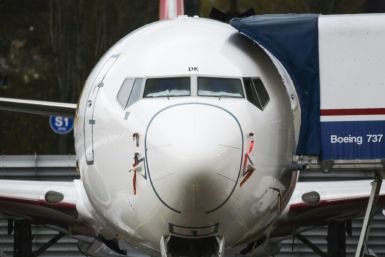World’s first drone test for mail delivery conducted in Singapore
The use of commercial drones for delivering mail is one step closer to reality in Singapore, after the testing of Singpost’s Unmanned Aerial Vehicle (UAV) on Thursday.
The test - the first for any postal service in the world - carried a package containing a letter and a t-shirt flew for two kilometres and took five minutes to complete.The UAV was fitted with enhanced safety features with a ‘prototype app’ that would allow the device to navigate itself using hi-tech security and verification features to ensure it reached its intended recipient.
The objective was to test the drone’s effectiveness in delivering parcels and goods to its customers in a timely manner.
The head of digital services for Singpost Dr Bernard Leong said the test’s success would pave the way for e-commerce to deliver technological advancement to it’s customers.
“There is immense potential in UAV technology for last-mile (sic) mail and e-commerce delivery,” he said. “As SingPost transforms into an eCommerce logistics enabler, we will continue to collaborate with industry leaders and chart new frontiers. Not only do we want to enable or accelerate e-commerce, we hope to contribute towards building Singapore into a Smart Nation, where technology improves the quality of lives.”
Meanwhile in Australia the implementation of drones for the delivery of mail to customers and other ecommerce commercial purposes still has a way to go as the technology just isn’t yet available.
Carla Bridge from the Australian Retailers Association said that many e-commerce retailers currently offer a “Quick and Collect” system. Online users order their goods, and they are informed of the closest pick-up store to collect their goods from.
However with online customers using e-commerce platforms more often, the need for having goods ‘on-demand’ is expected to increase. This is where the market for drones will boom, Ms Bridge said.
Civil Aviation Safety Authority spokesperson Peter Gibson said the legislation for drones to be used for commercial purposes will be looked into next year when CASA sits down to review the regulations for their use.
“There will be a complete review of the regulation of the remotely piloted aircraft framework and in that there will be allowances for the advancement of technology as it continues to evolve,” Mr Gibson said. He said the commercial use of drones was a consideration that can be applied into that framework only when the technology is thoroughly tested and meets the regulatory approvals for safe use within society.
He added emergency services such as the police, rural fire service and Fire and Rescue NSW were already using drones for surveillance purposes. A number of aerial surveillance companies for photographic purposes in remote areas were also using drones, although all had obtained an “unmanned operators certificate” - a requirement by CASA.
“I’d suggest that once the technology becomes available and all of the appropriate tests have been done, there’s no reason why people can’t have their goods delivered by drones. There still are a number of issues to cover yet, but we [CASA] will be prepared to cater for that opportunity when it presents itself,” Mr Gibson said.






